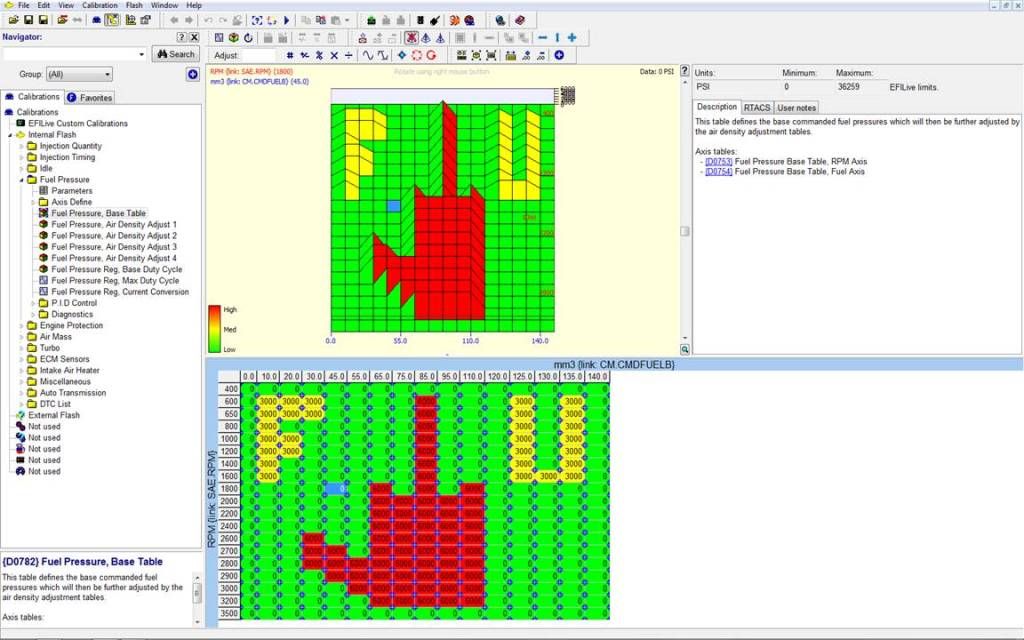If what Rich is saying makes sense then tell us why Cummins put a value in the tuning software that EfiLive translated as "mm3" that some think is not directly related to fuel flow?
The tune is built around this parameter. You run out of fuel flow volume the engine loses power. You build the tune to reflect a loss of fuel flow by lowering the numerical value of this parameter and the engine responds the same as it would if fuel flow volume were restricted. A well built tune will have the mm3 parameter adjusted to match the fuel flow volume of the components on the motor.
Exactly!!!
EFI has done such an awesome job of of giving us access to this ecm, and if you just dig at the software, some of the background stuff is not apparent .
The stock tune absolutely revolves around a few basic parameters, ONE being full load fuel volume or mm3's.
Lets go through how the ecm calculates the fuel mass for any individual given stroke.
Starting out with speed or torque demand (depending on ecm or end use)
(Accelerator position) at max actuation = Full load fuel volume. (mm3's)
BEFORE LIMITATIONS
Limitations being torque control, smoke control...AIR/FUEL ratio, speed ect.
NOW after limitations we exactly have our mm3's or (fuel mass)mg (depending on ecm)
(YES WE NOW HAVE OUR FUEL VOLUME/MASS already.....)
Next we check our fuel pressure setpoint chart vs rpm (Cool we now have our pressure point)
Next ON to the injector conversion table (Or pulsewidth table like efi likes to call it)
Using.....
1. fuel volume
2. pressure point
Placing our fuel volume required and pressure point into the injector conversion table or (pulsewidth table) we find our injector needs to energize for XXX amount of time to give us the volume of fuel our calculation started out with.
COOL....now we have our energization time.
Now what are we missing .....Oh yes.... TIMING.....
On to the main timing table, we know our rpm and we know our fuel mass we plan to inject into the combustion chamber, and BINGO there is our timing value (HOWEVER first taking in account limitations and modifiers)
NOW....
we have
1. fuel volume
2. pressure point
3. Injection duration to achieve our fuel volume from #1.....
4. TIMING.
There it is, wound up in a nutshell.
EFI does not make this all obvious, HOWEVER that is how it works.
NOW a quick explanation of the mm3's on the engine plate. This still seem's to be beyond doghouse's grasp so.....
Starting with the figure 129mm3's per stroke @ 2900 rpm for a rating of 325HP.
This IS the fuel volume shot into the combustion chamber during each combustion stroke.
OR
You can look at it per/cycle as some like to look at....
129mm3's * 6 = 774mm3's per cycle......knowing one cycle takes 2 crankshaft revolutions........(Now that number might start ringing some bells......)
OR
(2900 *6 /2 * 129mm3)/1000000 *60 = 67.338 liters per hour.
It is what it is, ^^^^ This is how it works.
Frankly if Doghouse wants to keep calling it "reference"......reference to angel tears or unicorn chit I don't care........

